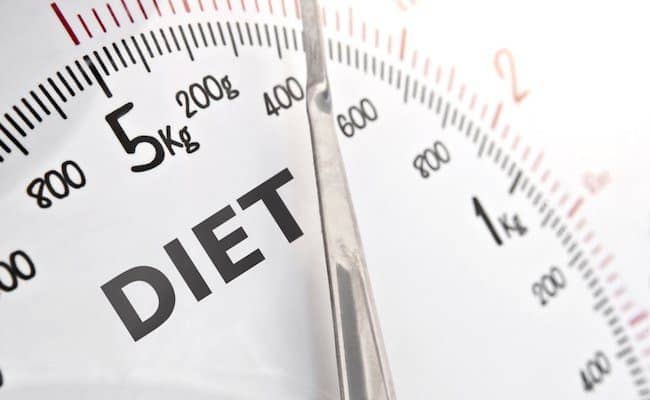
Calorie shifting is commonly seen in a number of popular diets and books including the “The Alternative-Day Diet” and “Crack the Fat-Loss Code: Outsmart Your Metabolism and Conquer the Diet Plateau”. The technique is based on the concept of confusing the metabolism by mixing up the amount of calories you consume each day, in the hope that the body does not become accustomed to one particular calorie intake and so kick starts the metabolism. Despite the popularity of this type of diet, there is little scientific evidence to support this type of eating regime for weight loss, so is it the right way to eat to drop those extra pounds?
What is calorie shifting?
Calorie shifting can theoretically be applied to any diet, and basically means that day to day intake of calories will vary. First a weekly calorie allowance for weight loss is calculated, then this is divided into uneven amounts to create a calorie intake goal for each day of the week, for example rather than consuming a limit of 2000 calories per day, you may consume 1200 calories one day and 2800 the next. The idea is to ensure that you don’t go over the weekly allowance, and keep daily intake as different as possible, for example one day you may eat three small meals, and the next you may add in two snacks to increase your intake.
The idea behind calorie shifting for weight loss
The concept of calorie shifting is that by changing the amount of calorie consumed daily your body will respond by increasing its resting metabolic rate, meaning you burn more calories. This confusion of the metabolism technique is commonly used by athletes and bodybuilders, who use similar techniques in a bid to increase muscle and lose fat.
Does it work?
There is no scientific evidence that supports a calorie shifting diet for weight loss. However, if the diet is balanced and achieves a negative calorie intake there is no reason why such as diet cannot be healthy and result in weight loss. A study published in the American Journal of Clinical Nutrition suggested that there was no difference between a calorie shifting diet and a conventional weight loss diet where the same amount of calories are consumed daily, in terms of fat loss or resting metabolic rate. This suggests that although a calorie shifting diet may not be any better than other diets for weight loss, if followed correctly it can be beneficial for weight loss.
To lose weight, a negative calorie balance is required overall. This means that we need to be burning more calories than we are consuming. This can be achieved by either reducing the number of calories we eat, by exercising to increase the amount we burn, or through a combination of both of these techniques. If a calorie shifting diet results in an overall negative calorie balance appropriate for the individual to lose weight, then there is no reason why it shouldn’t be successful for weight loss. However, it is a complicated way of losing weight if the same results can be achieved eating the same amount of calories daily.
Is it a healthy diet?
This very much depends on the diet that is being followed, no matter if you are shifting calories or not. If a balanced diet, with foods from all foods groups, that is high in fibre, lean protein, whole grain carbohydrates and healthy unsaturated fats is followed, there is no reason why a calorie shifting diet should not be a healthy one. The danger is that on days with lower intake, it is easy to miss valuable nutrients or not eat enough calories to fuel normal activities if the calorie intake is too low. To avoid this, try to base meals around healthy whole foods, rather than processed alternatives and eat food from all food groups for optimum nutrition. It may be necessary to eat more of a certain food on higher intake days to make up for those you have missed on other days. It is important to avoid ‘empty’ calorie foods that provide no nutrition other than calories, especially when limiting your intake. Make every food count to be the healthiest you can be.
If you workout, it may be beneficial to align higher calorie intake days with those on which you exercise to provide the necessary fuel for workouts. On these days it is essential to include sufficient carbohydrates to fuel your body and get the most from your workout.
Calorie shifting diets that eliminate food groups, promote days of very low intake (less than 1000 calories per day), are based on diet products or are lacking in variety should be avoided, as they leave you at risk of nutrient deficiencies and malnutrition.
Advantages of a calorie shifting diet
Although not the diet for everybody, providing a calorie shifting diet is balanced and varied, it can have a number of advantages for weight loss.
- If overall intake results in negative calorie balance, weight loss is likely.
- It can be applied to any diet, meaning it is very flexible for individual needs
- In general, the concept does not involve eliminating food groups and can be a healthy balanced diet.
- There are days when a larger intake is allowed, meaning your intake is not constantly restricted.
Disadvantages of a calorie shifting diet
A calorie shifting diet may be helpful for weight loss, but is definitely not suited to everybody has a number of drawbacks.
- Calorie shifting is thought to be no more effective for weight loss than a conventional calorie restriction diet, when you eat roughly the same daily, but is far more complicated.
- The diet is time consuming, with calculations of intake required daily for different numbers of calories, which in turn need to add up to the weekly calorie requirement. For this reason it may be difficult to follow long term.
- For success on this type of diet it is essential to have excellent knowledge of foods calorie content or a meal plan for guidance.
- Some calorie shifting diets may be overly restrictive on nutrients and calories, particularly on low intake days.
- The diet may not fit into your normal eating pattern or life style, which might not allow so much flexibility with when and what you eat.
- Low intake days may leave you lacking in energy due to low calorie intake.
- There is no evidence that this type of diet improves metabolism or fat loss.
Is it for me?
A calorie shifting diet, while not scientifically supported for weight loss, may be appropriate for some individuals under the guidance of a dietician or doctor. It is important to ensure that weekly intake results in negative energy balance in order to achieve the desired weight loss, and is also essential that nutrient requirements are met and adequate calories for daily life are consumed even on low intake days. For this reason, consulting a health professional is advised.
As it has been suggested that calorie shifting is no more effective than eating the same amount of calories daily to achieve an overall negative calorie balance, for some people a more traditional weight loss diet may be simpler and easier to follow, and therefore more likely to produce positive results.
References used in this article











David says
Hi Naomi,
That´s a nice resume of what is Calorie Shifting and of its pros and cons. I used it (and still am using it to maintain my weight) and can confirm what you are saying concerning the disadvantages. It is much more time consuming at the beginning to set up all the diet plans and menus and it is also more complicate to understand what your body´s calorie demand really is. But once you get the feeling of your calorie demand and how your body is responding, I don´t feel that it´s more complicate than any other low calorie diet. The advantage is that you learn to “listen to your body” and to change automatically your eating habits. Overall, I am happy with this approach and can recommend it.